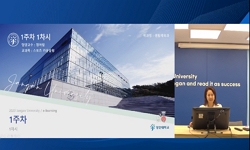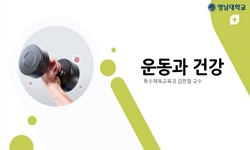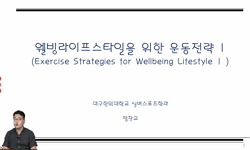Background: Falls are among the most common and serious health problems of older people. The psychological symptoms of falling have received relatively little attention compared to physical problems. Objective: The purpose of this study is to test a m...
http://chineseinput.net/에서 pinyin(병음)방식으로 중국어를 변환할 수 있습니다.
변환된 중국어를 복사하여 사용하시면 됩니다.
- 中文 을 입력하시려면 zhongwen을 입력하시고 space를누르시면됩니다.
- 北京 을 입력하시려면 beijing을 입력하시고 space를 누르시면 됩니다.

A Prediction Model of Fear of Falling in Older Adults Living in a Continuing-Care Retirement Community(CCRC) in United States
한글로보기https://www.riss.kr/link?id=A104808179
-
저자
정덕유 (이화여자대학교)
- 발행기관
- 학술지명
- 권호사항
-
발행연도
2009
-
작성언어
English
-
주제어
Fear of falling ; self-efficacy ; exercise ; Fear of falling ; self-efficacy ; exercise ; 낙상에 대한 두려움 ; 자기 효능감 ; 운동
-
등재정보
KCI등재
-
자료형태
학술저널
- 발행기관 URL
-
수록면
243-258(16쪽)
-
KCI 피인용횟수
12
- 제공처
- 소장기관
-
0
상세조회 -
0
다운로드
부가정보
다국어 초록 (Multilingual Abstract)
Background: Falls are among the most common and serious health problems of older people. The psychological symptoms of falling have received relatively little attention compared to physical problems. Objective: The purpose of this study is to test a model to explain the factors that influence fear of falling among older adults living in a continuing care retirement community (CCRC) in Baltimore city, United States. Methods: A secondary analysis was conducted using data obtained from a Health Promotion Survey done on 149 older adults living in a CCRC. Data was originally obtained during face to face interviews with each participant. Descriptive statistics and bivariate correlations were used to describe the sample and evaluate simple correlations. A path analysis was done using the AMOS 4.0 statistical program. Results: Of the 49 hypothesized paths, 13 were statistically significant, and the model accounted for 22% of the variance in fear of falling among the elderly. There was support for the fit of the model to the data with a nonsignificant chi square at 0.478 (df=2, p=0.79), and the ratio of chi-square to degrees of freedom was 0.24, a CFI of 0.99 and RMSEA of 0.00. In particular, gender, a history of falling, and exercise were significant predictors of fear of falling. Conclusions/Implications: As anticipated, exercise is an important factor to prevent fear of falling. As a modifiable variable, self-efficacy and outcome expectation indirectly influence fear of falling through exercise.
참고문헌 (Reference)
1 Rejeski, W., "White paper on physical activity in older adults" Robert Wood Johnson Foundation 2000
2 Centers for Disease Control and Prevention, "Web-based Injury Statistics Query and Reporting System (WISQARS): National Centerfor Injury Prevention and Control, Centers for Disease Control and Prevention (producer)"
3 Center for Disease Control and Prevention, "Web-based Injury Statistics Query and Reporting System (WISQARS): National Centerfor Injury Prevention and Control, Centers for Disease Control and Prevention (Producer)"
4 Folstein, M., "The minimental state: A practical method for grading the cognitive state of patients for the clinician" 12 : 189-198, 1975
5 Resnick, B., "The factors that influence exercise behavior in older adults" 26 : 34-42, 2000
6 Murphy, S. L., "The development of fear of falling amongcommunity-living older women: predisposing factors and subsequent fall events" 58 (58): 943-947, 2003
7 U. S. Census Bureau, "The 65 years and over population: 2000. Census 2000 Brief"
8 Resnick, B., "Testing a theoretical model of exercise behavior for older adults" 52 (52): 80-88, 2003
9 Resnick, B., "Testing a model of exercise behavior in older adults" 24 : 83-92, 2001
10 Ware, J. Jr., "SF-12: How to score the SF-12 physical and mental health summary scales (2ndEd.)" Health Institute, New England Medical Center 1995
1 Rejeski, W., "White paper on physical activity in older adults" Robert Wood Johnson Foundation 2000
2 Centers for Disease Control and Prevention, "Web-based Injury Statistics Query and Reporting System (WISQARS): National Centerfor Injury Prevention and Control, Centers for Disease Control and Prevention (producer)"
3 Center for Disease Control and Prevention, "Web-based Injury Statistics Query and Reporting System (WISQARS): National Centerfor Injury Prevention and Control, Centers for Disease Control and Prevention (Producer)"
4 Folstein, M., "The minimental state: A practical method for grading the cognitive state of patients for the clinician" 12 : 189-198, 1975
5 Resnick, B., "The factors that influence exercise behavior in older adults" 26 : 34-42, 2000
6 Murphy, S. L., "The development of fear of falling amongcommunity-living older women: predisposing factors and subsequent fall events" 58 (58): 943-947, 2003
7 U. S. Census Bureau, "The 65 years and over population: 2000. Census 2000 Brief"
8 Resnick, B., "Testing a theoretical model of exercise behavior for older adults" 52 (52): 80-88, 2003
9 Resnick, B., "Testing a model of exercise behavior in older adults" 24 : 83-92, 2001
10 Ware, J. Jr., "SF-12: How to score the SF-12 physical and mental health summary scales (2ndEd.)" Health Institute, New England Medical Center 1995
11 Fletcher, P. C., "Risk factors for falling among community-based seniors using home care services" 57 (57): 504-510, 2002
12 Fletcher, P. C., "Restriction in activity associated with fear of falling among community-based seniors using home care services" 33 : 273-279, 2004
13 Resnick, B., "Reliability and validity of the self-efficacy for exercise scale" 26 (26): 11-17, 2000
14 Sattin, R. W., "Reduction in fear of falling through intense Tai-Chi exercise training in older, transitionally frail adults" 53 : 1168-1178, 2005
15 Brouwer, B., "Reducing fear of falling in seniors through education and activity programs: a randomized trial" 51 : 829-834, 2003
16 Bruce, D. G., "Recreational physical activity levels in health older women: the importance of fear of falling" 50 : 84-89, 2002
17 Means, K. M., "Psychosocial effects of an exercise program in older persons who fall" 40 (40): 49-58, 2003
18 Cumming, R. G., "Prospective study of the impact of fear of falling on activities of daily living, SF-36 Scores,and nursing home admission" 55 (55): 299-305, 2000
19 Kline, R. X., "Principles and practice of structural equation modeling (2nd ed)" Guilford Press 2005
20 Close, J. C. T., "Predictors of falls in a high risk population: results from the prevention of falls in the elderly trial (PROFET)" 20 : 421-425, 2003
21 McAuley, E., "Physical activity and functional limitations in older women: influence of self-efficacy" 5 : 270-277, 2006
22 Resnick, B., "Path analysis of efficacy expectations and exercise behavior in older adults" 31 (31): 1309-1315, 2000
23 Resnick, B., "Outcome expectations for exercise scale: Utility and psychometrics" 55B (55B): S352-S356, 2000
24 Lach, H. W., "Incidence and risk factors for developing fear of falling in older adults" 22 (22): 45-52, 2005
25 American Geriatrics Society, "Guideline for the prevention of falls in older persons" 49 : 664-672, 2001
26 Martin, F. C., "Fear of falling limiting activity in young0old women is associated with reduced functional mobility rather than psychological factors" 34 : 281-287, 2005
27 Evitt, C. P., "Fear of falling in older adults: a guide to its prevalence, risk factors, and" 29 (29): 207-210, 2004
28 Li, F., "Fear of falling in elderly persons: association with falls, functional ability, and quality of life" 58 (58): 283-290, 2003
29 Vellas, B. J., "Fear of falling and restriction of mobility in elderly fallers" 26 : 189-193, 1997
30 Resnick, B., "Falls in a community of older adults: findings and implications for practice" 17 (17): 81-91, 2004
31 Friedman, S. M., "Falls and fear of falling: Which comes first? A longitudinal prediction model suggests strategies for primary and secondary prevention" 50 (50): 1329-1335, 2002
32 Andresen, E. M., "Cross-sectional and longitudinal risk factors for falls, fear of falling, and falls efficacy in a cohort of middle-aged African Americans" 46 (46): 249-257, 2006
33 Murphy, S. L., "Characteristics associated with fear of falling and activity restriction in community-living older persons" 50 : 516-520, 2002
34 Means, K. M., "Balance, mobility, and falls among community-dwelling elderly persons" 84 (84): 238-250, 2005
35 Kressig, R. W., "Associations of demoraphic, functional, and behavioral characteristics with activity-related fear of falling among older adults transitioning to frailty" 49 : 1456-1462, 2002
36 Schoenfelder, D. P., "An exercise program to improve fall-related outcomes in elderly nursing home residents" 17 (17): 21-31, 2004
37 Gagnon, N., "Affective correlates of fear of falling in elderly persons" 13 (13): 7-14, 2005
38 DiPietro, L., "A survey for assessing physical activity among older adults" 25 (25): 628-642, 1993
39 Resnick, B., "A prediction model of aerobic exercise in older adults living in a continuing-care retirement community" 13 (13): 287-310, 2001
40 Resnick, B., "A longitudinal analysis of efficacy expectations and exercise in older adults" 18 (18): 331-343, 2004
동일학술지(권/호) 다른 논문
-
수도권 지역 중년기 이후 세대의 노후생활 인식과 노인에 대한 인식
- 한국노년학회
- 최성재
- 2009
- KCI등재
-
죽음준비교육이 노인의 죽음에 대한 태도와 우울에 미치는 효과
- 한국노년학회
- 오진탁
- 2009
- KCI등재
-
HSEP를 적용한 낙상예방프로그램이 재가노인의 신체균형과 보행, 하지근력, 낙상공포 및 낙상효능감에 미치는 효과
- 한국노년학회
- 유인영
- 2009
- KCI등재
-
당뇨노인의 건강증진행위가 삶의 만족도에 미치는 영향에 대한 우울의 매개효과
- 한국노년학회
- 김동배
- 2009
- KCI등재
분석정보
인용정보 인용지수 설명보기
학술지 이력
| 연월일 | 이력구분 | 이력상세 | 등재구분 |
|---|---|---|---|
| 2026 | 평가예정 | 재인증평가 신청대상 (재인증) | |
| 2020-01-01 | 평가 | 등재학술지 유지 (재인증) |  |
| 2017-01-01 | 평가 | 등재학술지 유지 (계속평가) |  |
| 2013-01-01 | 평가 | 등재학술지 유지 (등재유지) |  |
| 2010-01-01 | 평가 | 등재학술지 유지 (등재유지) |  |
| 2008-01-01 | 평가 | 등재학술지 유지 (등재유지) |  |
| 2006-01-01 | 평가 | 등재학술지 유지 (등재유지) |  |
| 2003-01-01 | 평가 | 등재학술지 선정 (등재후보2차) |  |
| 2002-01-01 | 평가 | 등재후보 1차 PASS (등재후보1차) |  |
| 2000-07-01 | 평가 | 등재후보학술지 선정 (신규평가) |  |
학술지 인용정보
| 기준연도 | WOS-KCI 통합IF(2년) | KCIF(2년) | KCIF(3년) |
|---|---|---|---|
| 2016 | 1.34 | 1.34 | 1.72 |
| KCIF(4년) | KCIF(5년) | 중심성지수(3년) | 즉시성지수 |
| 1.84 | 2.08 | 2.242 | 0.19 |




 DBpia
DBpia







